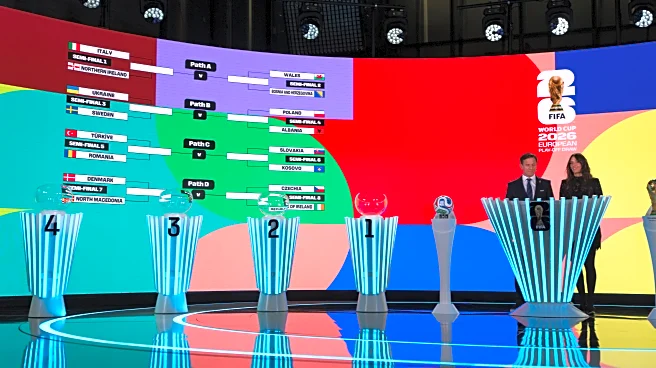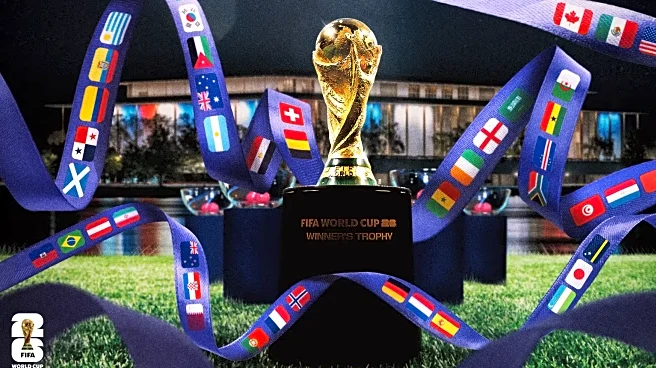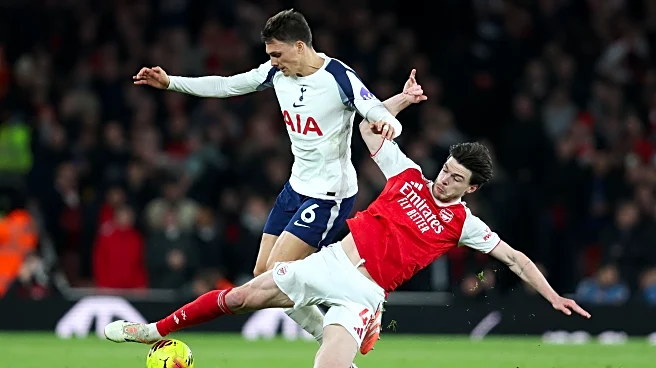What's Happening?
FIFA has announced changes to the draw format for the 2026 World Cup, aiming to prevent early matchups between the top-ranked teams. The tournament, co-hosted by the United States, Canada, and Mexico,
will feature 48 teams divided into four pots. The top four teams—Spain, Argentina, France, and England—will be placed in separate sections of a seeded tournament bracket. This adjustment ensures that these teams, if they win their respective groups, will not face each other until the semifinals. The draw will take place at the Kennedy Center in Washington, D.C., and will involve placing teams into 12 groups of four. The host countries, along with the nine highest-ranked teams, will be in Pot 1. The draw aims to maintain competitive balance and ensure that top-ranked teams do not meet before the final.
Why It's Important?
The changes to the World Cup draw format are significant as they aim to enhance the competitive balance of the tournament. By ensuring that top-ranked teams do not meet until the later stages, FIFA is likely to increase the excitement and viewership of the tournament. This format could lead to more strategic planning by teams and potentially more thrilling matches in the knockout stages. The decision also reflects FIFA's efforts to maintain fairness and competitiveness in the tournament, which could impact the strategies of participating teams and the overall dynamics of the World Cup.
What's Next?
The draw for the 2026 World Cup is scheduled for December 5, with the match schedule to be released the following day. Teams will begin preparing for the tournament, which starts on June 11, 2026. The draw will determine the group stage matchups, influencing team strategies and preparations. Stakeholders, including national teams and fans, will closely watch the draw to understand the potential paths to the final. The tournament's format may also prompt discussions among football analysts and fans regarding its impact on the competition.















